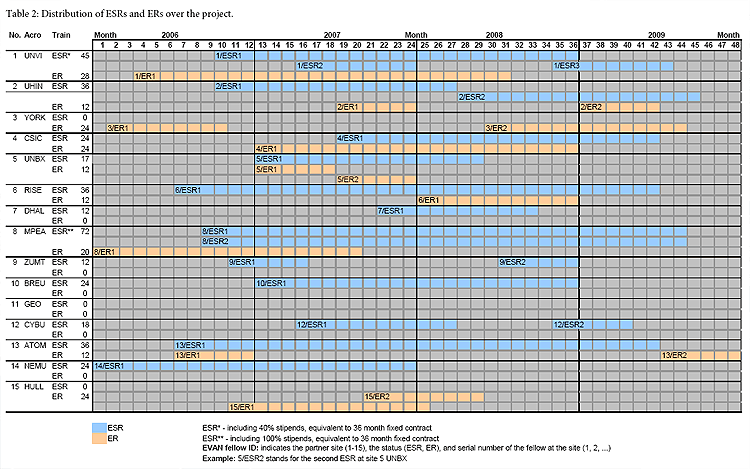Employed Fellows
26 EVAN fellows were found
| |

|
Deano Stynder
Laboratoire d'Anthropobiologie
Université Paul Sabatier, France
Deano Stynder was employed as a postdoctoral fellow (EVAN Research Training Network) at the University of Paul Sabatier, Toulouse, France. He is a biological anthropologist working on various aspects of craniofacial form variation both within, as well as between extant and recently extinct human populations.
|
|
| |
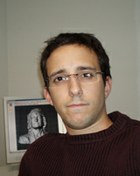
|
Alexandre Bourdeu
Department of Anthropology
University of Vienna, Austria
I am an engineer in Optics and Image Processing who has had a two-year EVAN fellowship at Breuckmann GmbH, in Meersburg, Germany.
My task there was to implement applications to help anthropologists in the digitization of objects with 3-dimensional surface scanners. This included the development of functions for morphometrical analysis as well as for the improvement of rendering.
After the end of my EVAN contract, I have begun a PhD thesis in anthropology at the University of Vienna, on the "Study of the Inheritance of the Habsburg Prognathism Through Sculpted Portraits".
|
|
| |

|
Imen Elhechmi
Département d'Optique P.M. Duffieux FEMTO-ST
Université de Franche Comté 25030 cedex Besançon, France
Dr. Imen ELHECHMI obtained a Ph.D. degree in Engineer Science from Besançon University on January 8th, 2010.(EVAN Training Network). The aim of her work is the development of biometric tools. It is well known that current methods in biometry are not reliable enough. Therefore this work consists in the improvement of current methods of age (juveniles and adults) estimation in extant humans and in the development of a new biometric approach (based on dental growth increments and changes in dental tissues due to cementum and dentine apposition) . Ph.D. Supervised by Prof. Tijani Gharbi and Prof. José Braga.
|
|
| |

|
Ben Ali Qualid
Functional Morphology and Evolution Group
University of York, GB
Dr. Oualid Ben Ali obtained a Ph.D. degree in Computer Science from Laval University (Quebec) (supervised by Bernard Moulin since 2001).
He is mainly interested in using multiagent systems to simulate behaviors and phenomena in 2D-3D geographic virtual spatial environments.
|
|
| |
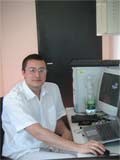
|
Michael Coquerelle
Department of Anthropology
University of Vienna , Austria
Michael Coquerelle is currently employed as a Marie Curie doctoral fellow (EVAN Training Network). He is a Ph.D. student working on growth and developmental patterns in primate mandibles. This work is supervised by José Braga, Gerhard W. Weber and Demetrios Halazonetis.
|
|
| |
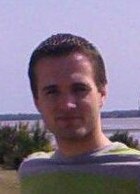
|
Clement Creusot
Department of Computer Science
University of York - Cybula, U.K.
I am a Marie Curie doctoral fellow (EVAN Research Training Network) employed at Cybula Ltd (UK). I am currently doing a PhD on automatic 3D face recognition at the university of York . My work is to evaluate new techniques for automatic face landmarking. The first expected outcome is a better and faster registration of the 3D faces. The use of the landmarks to directly recognize the faces will also be evaluated.
|
|
| |

|
Cinzia Fornai
Department of Anthropology
University of Vienna, Austria
I focus my research on the study of the dental morphology of South African hominids with particular interest to the matter of the hypothesis of the occurrence of a further new australopithecine species at Sterkfontein Member 4 and Makapansgat fossil sites. On this topic, I performed an MSc through the University of the Witwatersrand, Johannesburg under the supervision of Professor R. J. Clarke.
I have recently joined the EVAN project as a Marie Curie Early Stage Researcher at the Department of Anthropology, University of Vienna, with the aim to train in quantitative morphology of hominoid teeth, including studies in palaeoanthropology, growth and development, and the development of methods in Virtual Anthropology (VA) and Geometric Morphometrics (GMM). The main purpose of the training period at the Department of Anthropology is to develop a PhD project focused on the study of dental hominid material to contribute to our knowledge of the early stage of human evolution and possibly unravel the phyletic relationships between early hominids.
In particular, I have been trained for the use of “Amira” software one of the most powerful and versatile software for visualization and manipulation of virtual images. I attended a workshop in York, UK, for the use of the newly developed EVAN “Toolkit”, a GMM and VA statistical package. I have been encouraged and financially supported to participate to meetings such as the AAPA Congresses 2010 in New Mexico, which represents one of the most important events for anthropologists and palaeoanthropologists.
|
|
| |

|
Caroline Souday
Departement of Human Evolution
Max-Planck-Institute for Evolutionary Anthropology , Germany
I am employed as a Marie Curie post-doctoral fellow (EVAN training network). My research project focuses on the application of 2D and 3D geometrics to the study of deciduous post-canine teeth and aims to fill a gap in the understanding of juvenile hominin dental evolution.
|
|
| |
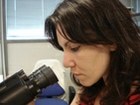
|
Elena F Kranioti, MD, Ph.D
Department of Paleobiology
Museo Nacional de Ciencias Naturales, Spain
Elena Kranioti is an EVAN fellow in the Museo Nacional de Ciencias Naturales in Madrid, Spain, since July 2007. During the first two years of her fellowship she focused her research on the study of skeletal growth via the observation of remodeling processes. After the end of her original project (15.07.2009) she got an extension contract in EVAN (up to the end of the EVAN project, December, 2009) for studying the ontogenetic growth of the occipital bone using 3D Geometric Morphometrics. Within the EVAN network she attended 12 international workshops and she became capable of operating a series of software used in these fields such as, tps series, Morphologika, Amira, Rapidform, Morpheus et al., Viewbox, EVAN Toolkit etc. Additionally, she have made significant contacts in the past years (physical and forensic anthropologists, archaeologists, paleoanthropologists, paleobiologists etc) which will eventually lead to productive collaborations in the near future.
|
|
| |

|
Filipe Miguel Maria Marreiros
Radiologie II
Medizinische Universität Innsbruck, Austria
Radiologie
Medizinische Universität, Austria
I am currently employed as a Marie Curie doctoral fellow (EVAN Training Network) at the Department of Radiology of the Medical University Innsbruck, Austria. I’m working on the developed of software to design custom implants for large bone defects in craniofacial surgery.
|
|
| |
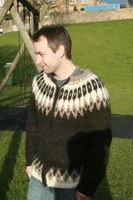
|
Helgi Petur Gunnarsson
Department of Computer Science
University of Hull, United Kingdom
I am a Marie Curie Early Stage Reseacher Fellow at the University of Hull.
We are designing and developing an open source toolbox to support the analysis and visualization of skeletal structures in anthropology.
|
|
| |
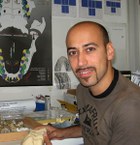
|
Luca Fiorenza
Department of Paleoanthropology and Quaternary Paleontology
Research Institute Senckenberg, Germany
I am a PhD student working on occlusion and function of hominid teeth, studying the wear patterns in Neanderthals and early Homo sapiens by 3-D analysis.
It is hypothesised that differences in the daily diet of Homo sapiens and Homo neanderthalensis should be mirrored in differences of tooth use and the resulting wear pattern.
|
|
| |
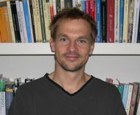
|
Markus Bastir
Department of Paleobiology
Museo Nacional de Ciencias Naturales, Spain
Markus Bastir was employed as a Marie Curie post-doctoral fellow (EVAN training network) at the Department of Paleobiology of the Museo Nationale de Ciencias Naturales.
His research involves geometric morphometrics and virtual anthropological applications in the study of the evolution and development in the human craniofacial system in Pleistocene hominids.
|
|
| |

|
Melanie Frelat
Department of Anthropology
University of Vienna, AUSTRIA
Mélanie Frelat is currently employed as a Marie Curie post-doctoral fellow (EVAN training network) at the Department of Anthropology of the University of Vienna. She is a physical anthropologist and her research focuses on the application of geometric morphometrics and virtual anthropology to the study of long bones.
|
|
| |
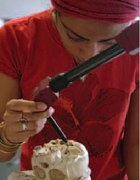
|
Nandini Singh
Department of Human Evolution
Max Planck Institute for Evolutionary Anthropology, Germany
Nandini Singh Ph.D.student is currently employed as a Marie Curie doctoral fellow (EVAN Training Network).
I am a PhD student at the department of Human Evolution, Max Planck Institute for Evolutionary Anthropology. The focus of my research is on the integrative aspects of the evolution and development of the primate cranium. This work is co-supervised by Dr. Katerina Harvati and Professor Jean-Jacques Hublin.
|
|
| |
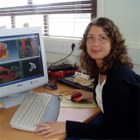
|
Priscilla Bayle
UMR 5199 CNRS PACEA
University of Bordeaux, France
Priscilla Bayle was employed as a Marie Curie doctoral fellow (EVAN Training Network) at the Neanderthal Museum (Germany) from 2006 to 2008. She is a paleoanthropologist working on dental developmental patterns and tooth tissue proportions in the genus Homo, notably in Neanderthals and modern humans, using high-resolution imaging techniques...
|
|
| |
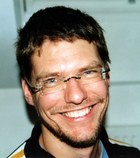
|
Philipp Gunz
Department of Human Evolution
Max Planck Institute for Evolutionary Anthropology, Germany
Philipp Gunz, Ph.D. was employed as a Marie Curie postdoctoral fellow (EVAN Training Network) from 2006 to 2007.
He is a physical anthropologist developing software to deal with taphonomic distortions and estimate missing parts of incomplete fossil crania using reference-based geometric and statistical methods.
|
|
| |

|
Ramy Ghassan Dimitri Gowigati
Department of Computer Science
University of Hull, UK
Recently I finished my MSc in Games Programming from University of Hull in September 2009. My dissertation project was Networking in Massively Multiplayer Online Games where I looked into different networking structures and algorithms for client and server side in MMO Games. I am employed as a Marie Curie Early Stage Researcher (ESR) under the EVAN project.
|
|
| |
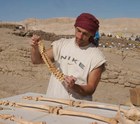
|
Stefano Benazzi
Senckenbergische Naturforschende Gesellschaft, Germany
I am currently employed as a Marie Curie post-doctoral fellow (EVAN training network) at Department of Palaeoanthropology and Messel Research, Senckenberg Research Institute. I'm a physical anthropologist working on the process automation of occlusal fingerprint analysis on hominid teeth for the reconstruction of evolutionary development of teeth and the interpretation of the dependency of morphology, biomechanics and environment.
|
|
| |
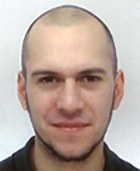
|
Sascha Senck
Department of Anthropology
University of Vienna, Austria
I am currently employed as a Marie Curie doctoral fellow (EVAN Training Network) at the Department of Anthropology in Vienna, Austria. My studies are including the morphometric analysis of crania, mandibles and teeth of Australopithecines, early modern humans and extant hominoids.
|
|
| |
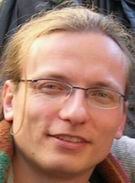
|
Stanislav Katina
Department of Anthropology
University of Vienna, Austria
Stanislav Katina, Ph.D. was employed as a Marie Curie postdoctoral fellow (EVAN Training Network).
He is a biostatistician and his research covers theoretical fields as Shape Analysis, Nonparametric Regression, Halfspace Location and Regression Depth, Permutation Tests, Multivariate Statistical Analysis, Computer Statistics and Data Analysis and applied fields as Zoology, Physical and Clinical Anthropology and Electrocardiology.
|
|
| |
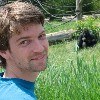
|
Simon Neubauer
Department of Human Evolution
Max Planck Institute for Evolutionary Anthropology, GERMANY
I am currently employed as a Marie Curie doctoral fellow (EVAN Training Network) at the Department of Human Evolution of the Max Planck Institute for Evolutionary Anthropology in Leipzig. For my PhD project, I am working on endocranial form changes during hominoid ontogeny to learn about brain development.
|
|
| |

|
Vincent Dalge
Deparment of Computer Science
University of Hull, UK
I have just finished my MSc by research degree in Computer Science at the University of Hull in 2008-2009. My thesis was named "Innovative Visualization for Virtual Anthropology" and was interested in finding and implementing new methods of visualization for virtual anthropology. My MSc was related with the development of the Evan Toolkit designed to be a software for 3D geometric morphometrics analysis and visualizations. I am now employed as a Marie Curie Early Stage Reseacher Fellow at the University of Hull to continue the development of the Evan Toolkit.
|
|
| |
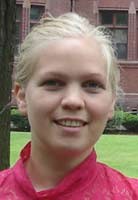
|
Valdis Gudmundsdottir
Neurospin | Institut d'Imagerie BioMédicale
Commissariat à l'Energie Atomique, France
Valdis Gudmundsdottir PhD Student is currently employed as a Marie Curie doctoral fellow (EVAN Training Network). She is a PhD student working on the applications of paleoanthropological methods for the study of the human cortex under the scientific direction of Jean-Francois Mangin.
|
|
| |
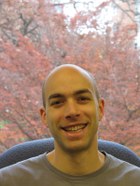
|
Yann Heuzé
Department of Anthropology
The Pennsylvania State University, United States
Yann Heuzé was employed as a Marie Curie postdoctoral fellow during 20 months (2007-2008) at the Radiology Department, Medical University Innsbruck to optimize bone implant design for large skull defects. Different techniques were and continue to be used/developed (by Filipe Marreiros): 3D Geometric Morphometrics dealing with landmarks and semilandmarks, automatic finding borders of the bone defect, Fused Deposition Modeling technique. The objective of this position was to summarize the needed methods and algorithms to generate a software library and then to develop a software for custom implant design.
|
|
| |
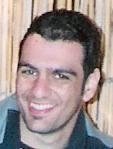
|
Youssef Shady George Nashed
Department of Computer Science
University of Hull, UK
I obtained my MSc degree in Computer Games Programming at the University of Hull in Sep. 2008, with a dissertation concerning machine learning and its aplicability to video games.
I am employed as a Marie Curie Early Stage Researcher (ESR) under the EVAN training network project. I am part of the team in the computer science department that is responsible of designing and implementing the open-source software package that we hope will be the standard software used by academics and students in the field of 3D geometric morphometrics.
My research areas include 3D visualization, data flow paradigms, parallel algorithms and concurrency, and artificial intelligence.
|
|
|
EVAN Fellowship Informations:
The main purposes of our EVAN network are the
training-through-research, including Ph.D. studies of young researchers
under the supervision of experienced scientists, clinicians and
developers who share common interests in quantitative morphology and
state-of-the-art imaging and analysing techniques.
Read more about:
Over the period of 48 months of the project, it is planned to
recruit:
- 18 Early Stage Researchers
- 14 Experienced researchers
The distribution of ESR and ER months over the course is given in the
tablegraphic below.
Most of the fellows will be employed with a fixed contract.
Fellows assignments:
Legend
ESR: Early Stage Researcher
ER: Experienced Researcher
|


























